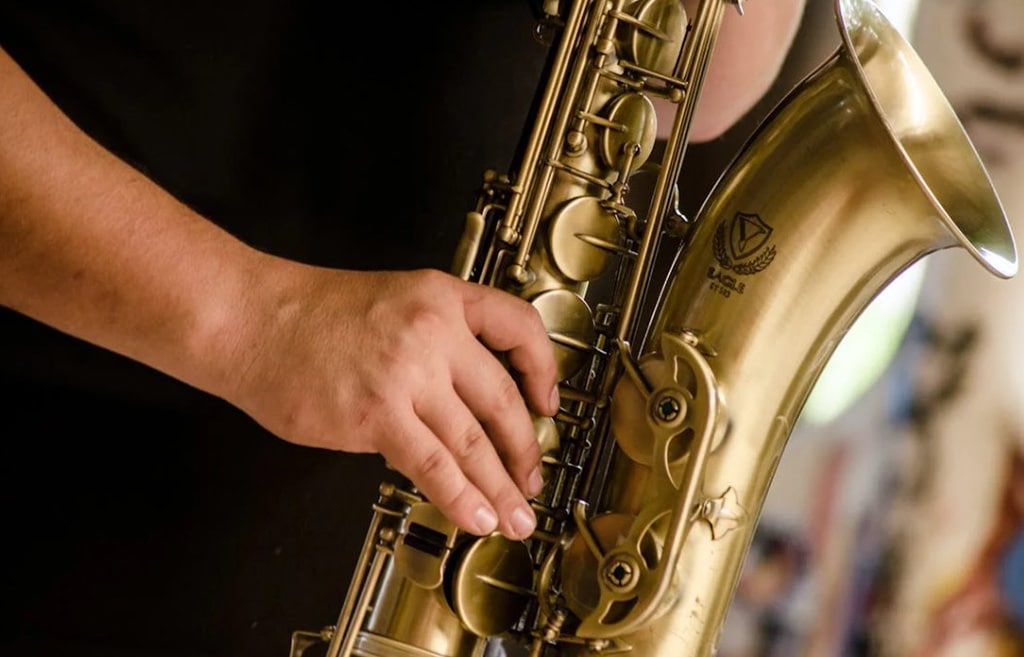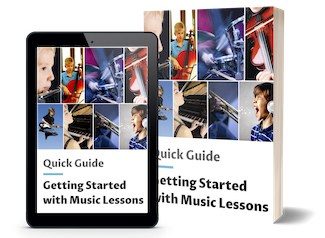Imagine a saxophone so tiny it could practically fit in your pocket. The soprillo, also called the piccolo saxophone, is the smallest saxophone in the world at just 13 inches long.
This mini musical marvel was created by German instrument maker Benedikt Eppelsheim in the late 1990s. You’ll be amazed to learn that despite its small size, this B♭ instrument produces sounds an entire octave higher than a soprano saxophone.
While it might look like a toy, playing the soprillo requires serious skill and technique. You’ll discover everything from its unique design challenges to the famous musicians who’ve mastered this incredible instrument.
What Is the Smallest Saxophone?
The soprillo saxophone holds the title as the world’s smallest saxophone, measuring just 13 inches long with its mouthpiece attached. This tiny instrument produces sounds one octave higher than a soprano saxophone and represents the extreme high end of the saxophone family.
Definition and Characteristics
The soprillo is a woodwind instrument that uses a single reed, just like its larger saxophone cousins. German instrument maker Benedikt Eppelsheim developed this piccolo-sized saxophone in the late 1990s.
You’ll find the soprillo pitched in B♭, which means it sounds a minor seventh higher than written music. The instrument is incredibly compact at 33 centimeters (13 inches) long including the mouthpiece.
The soprillo’s small size creates unique challenges for players. You need a very small reed and must use a tightly focused mouth position called an embouchure.
Key features of the soprillo:
- Material: Brass construction like other saxophones
- Reed size: Extremely small compared to standard saxophones
- Key range: Limited to written E♭6 due to size constraints
- Special design: Upper octave key placed on the mouthpiece
Comparing Size and Pitch
When you compare the soprillo to other saxophones, the size difference is dramatic. A soprano saxophone is twice the length of a soprillo.
The soprillo sits at the very top of the saxophone family in terms of pitch. It produces the highest sounds of any saxophone ever made.
Here’s how the soprillo compares to common saxophones:
| Saxophone Type | Relative Size | Pitch Relationship |
|---|---|---|
| Soprillo | Smallest | Highest pitch |
| Sopranino | Small | Very high pitch |
| Soprano | Medium-small | High pitch |
| Alto | Medium | Mid-range pitch |
Soprillo vs. Sopranino
You might confuse the soprillo with the sopranino saxophone, but they’re different instruments. The sopranino was part of Adolphe Sax’s original saxophone family from the 1840s.
The soprillo came much later as an extension to the existing saxophone family. Eppelsheim created it to push the boundaries of how small and high-pitched a saxophone could be.
Main differences:
- Size: Soprillo is smaller than sopranino
- Pitch: Soprillo plays one octave higher than soprano; sopranino plays a fourth higher
- History: Sopranino is traditional; soprillo is modern innovation
- Availability: Sopranino is more commonly produced; soprillo is rare and expensive
The sopranino is still considered small, but the soprillo takes miniaturization to the extreme. Only Eppelsheim manufactures soprillos today, making them quite rare in the music world.
Yamaha YAS280 Student Alto Saxophone V2

DESIGNED FOR: An excellent choice for both beginner students and intermediate players
FEATURES: Easy blowing for perfect intonation
OTHER INFO: Comes with the popular 4C mouthpiece and ligature set that's easy to play with a quick response
Yamaha YAS280 Student Alto Saxophone V2
- The carrying case is light but strong
- Includes everything you need, from a cleaning kit to cork grease
- Although this is a beginner model, the price is slightly higher than some other saxophones on the market. However, it will hold its resale value well
When you click ‘Check Price’, you’ll see there are loads of great places to buy this item. Our personal favorite is Sweetwater for the US, and Thomann and Gear4Music for the UK & Europe.
They are the largest music retailers, with excellent customer service, competitive prices, really fast shipping, and the longest guarantees.
The professional musician who wrote this article combined many things,
from the product build, manufacturer’s reputation through to feedback
from other users, to create our famous TedScore™.
Types of Smallest Saxophones
The smallest saxophones include the soprillo and sopranino, each offering unique playing experiences and distinct sound characteristics. These tiny instruments push the boundaries of traditional saxophone design with their compact size and high-pitched tones.
Soprillo Saxophone Overview
The soprillo holds the title as the world’s smallest saxophone. German instrument maker Benedikt Eppelsheim created this tiny marvel in the late 1990s.
At just 33 cm (13 inches) long with the mouthpiece, the soprillo is incredibly compact. You’ll find it pitched in B♭, sitting one full octave above a soprano saxophone.
This instrument presents serious challenges for players. The mouthpiece is extremely small and requires a tiny reed.
Your embouchure needs to be very tight and focused. The upper octave key sits right on the mouthpiece, which is unusual for saxophones.
The keywork only goes up to a written E♭6 instead of the typical F or F♯. Very few musicians play the soprillo regularly.
Notable players include:
- Nigel Wood (recorded “Soprillogy” album)
- Vinny Golia
- Jay C. Easton
- Attilio Berni
Sopranino Saxophone Features
The sopranino saxophone ranks as the second smallest in the saxophone family. It’s pitched in E♭ and offers a more manageable playing experience than the soprillo.
You’ll find the sopranino easier to handle than its tiny cousin. The instrument has a more traditional saxophone design with standard keywork.
Most sopranino saxophones feature a curved bell like other family members. The range covers about two octaves, giving you more musical flexibility.
This instrument appears more often in classical and contemporary music. You can find it in some jazz ensembles and experimental groups.
The sopranino produces a bright, piercing sound that cuts through ensemble textures. It’s still quite rare compared to alto or tenor saxophones.
Design and Construction
The soprillo’s tiny size creates unique engineering challenges that set it apart from regular saxophones. Its compact design requires special materials, modified keywork, and careful attention to tuning systems.
Material and Finish Options
The soprillo uses the same brass construction as larger saxophones. You’ll find it made from yellow brass, which gives it a bright, focused sound perfect for its high pitch range.
The instrument typically comes with a lacquered finish to protect the metal. Some makers offer silver-plated options, though these are less common due to the limited production numbers.
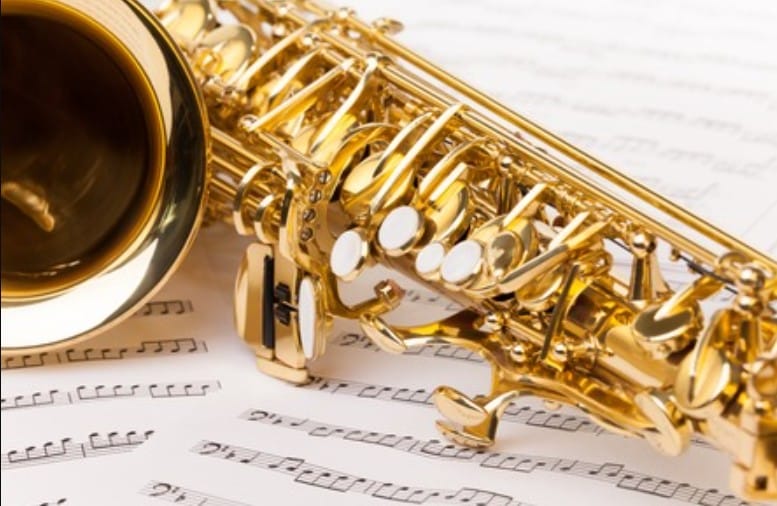
Weight is a major advantage – the soprillo weighs much less than any other saxophone. This makes it perfect for travel or extended playing sessions where you don’t want arm fatigue.
The brass thickness must be carefully balanced. Too thin and the instrument becomes fragile, too thick and it affects the sound quality you’re looking for.
Keywork and Mechanics
The soprillo’s keywork is drastically simplified compared to larger saxophones. You’ll notice it only extends to a written E♭6 instead of the usual F or F♯ found on other saxes.
The upper octave key sits on the mouthpiece – this is completely different from regular saxophones. This placement is necessary because there isn’t enough room on the tiny body for traditional key placement.
Key spacing is extremely tight, which makes finger placement more challenging. Your fingers need to be very precise when playing this instrument.
| Feature | Soprillo | Regular Saxophone |
|---|---|---|
| Highest Key | E♭6 | F or F♯ |
| Octave Key Location | Mouthpiece | Body |
| Key Spacing | Very tight | Standard |
The springs and mechanisms are miniaturized versions of standard saxophone parts. This makes repairs more delicate and requires specialized knowledge from your repair technician.
Tuning and Range
The soprillo is pitched in B♭, exactly one octave higher than a soprano saxophone. Your written notes will sound much higher than what you see on the page.
The instrument measures just 33 cm (13 inches) long including the mouthpiece. This makes it half the length of a soprano sax while producing notes an octave higher.
Intonation can be tricky due to the extremely small bore size. You’ll need to develop a very focused embouchure to play in tune consistently.
The limited range means you can’t play as many notes as on larger saxophones. This affects what music you can perform on the instrument.
Your breath support needs to be more controlled since the small internal volume responds quickly to air pressure changes.
Playing the Smallest Saxophone
The soprillo requires special techniques and equipment due to its tiny size. You’ll face unique challenges with the mouthpiece, fingering, and sound production that differ from standard saxophones.
Mouthpiece and Reed Selection
The soprillo’s mouthpiece is much smaller than other saxophones. You need a very small reed to match, which can be hard to find and expensive.
Your embouchure must be extremely tight and focused. This means you’ll press your lips together more firmly than with larger saxes. The small mouthpiece makes it tough to get a good seal.
Reed considerations:
- Size: Much smaller than soprano reeds
- Strength: Usually softer reeds work better
- Cost: More expensive due to low demand
You’ll need to experiment with different reed brands. Not all companies make soprillo reeds. The small size means even tiny differences in the reed can change your sound a lot.
Your mouth position needs to be very precise. Small changes in how you hold the mouthpiece will affect your tone. This makes the soprillo harder to play than bigger saxophones.
Rico by D'Addario Soprano Saxophone Reeds

PERFECT FOR: Both classical and jazz applications
FEATURES: With a thin, unfiled blank for a clear and quick response
OTHER INFO: These reeds vibrate very freely and produce a warm and clear tone
Rico by D'Addario Soprano Saxophone Reeds
- Ideal for developing musicians requiring a reliable sound and excellent playability
- Made with precise manufacturing methods for a high level of consistency
- None!
When you click ‘Check Price’, you’ll see there are loads of great places to buy this item. Our personal favorite is Sweetwater for the US, and Thomann and Gear4Music for the UK & Europe.
They are the largest music retailers, with excellent customer service, competitive prices, really fast shipping, and the longest guarantees.
The professional musician who wrote this article combined many things,
from the product build, manufacturer’s reputation through to feedback
from other users, to create our famous TedScore™.
Fingering Challenges
The soprillo’s keys only go up to written E♭6 instead of F or F♯ like most saxes. This limits your high notes compared to other saxophones.
The upper octave key sits on the mouthpiece, not the body. You’ll need to adjust your left thumb position to reach it. This feels strange if you’re used to regular saxophones.
Key differences:
- Shorter key range
- Octave key on mouthpiece
- Smaller finger spacing
- Limited palm keys
Your fingers need to be more accurate because the keys are so close together. Small hands actually work better for this instrument. The short tube length means your finger positions feel cramped.
Some advanced techniques like altissimo are nearly impossible. The soprillo’s design doesn’t support the same extended range as larger saxes.
Sound and Tone Quality
The soprillo sounds one octave higher than a soprano saxophone. Your notes will be very bright and piercing, almost like a piccolo.
Getting a good tone takes lots of practice. The small size makes it easy to sound squeaky or thin. You need steady air support even though the instrument is tiny.
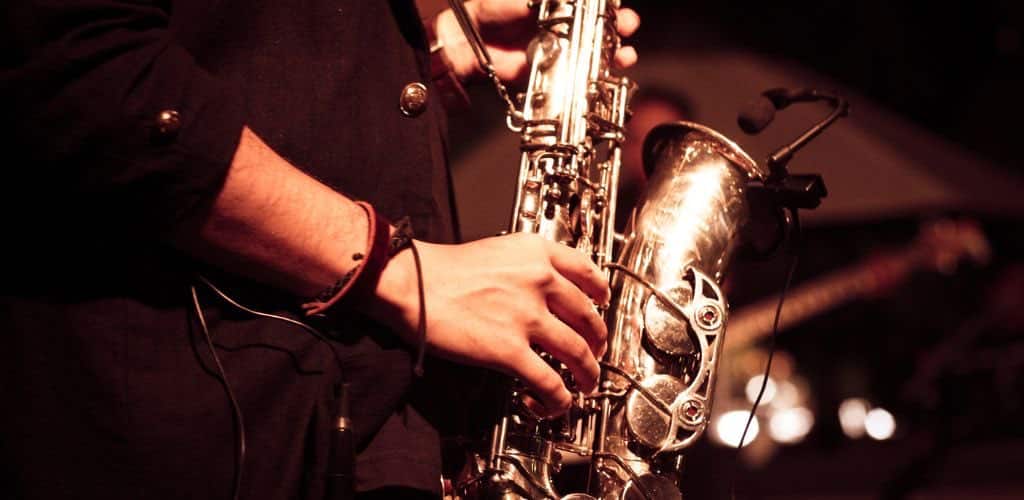
Tone characteristics:
- Very high pitch
- Bright, piercing sound
- Easy to overblow
- Limited dynamic range
Your breath control becomes critical with the soprillo. Too much air pressure makes harsh sounds. Too little air makes weak, airy tones.
The upper register is especially tricky to play smoothly. Many players struggle with the highest notes sounding clean. Professional soprillo players spend years developing their technique.
Recording and amplification can be challenging. The soprillo’s high frequencies sometimes don’t capture well on standard audio equipment.
Musical Applications and Genres
The smallest saxophones bring unique voices to many music styles, from jazz combos to classical chamber groups. Their bright, piercing tones cut through ensembles while adding special textures to smaller musical settings.
Role in Jazz and Contemporary Music
Your smallest saxophone shines brightest in jazz settings where its high pitch creates exciting musical moments. The soprano sax became famous through players like Sidney Bechet and John Coltrane, who used its voice for powerful solos.
In modern jazz, you’ll hear soprano saxes leading melody lines in small combos. The instrument works great for bebop and fusion styles because it can play fast passages clearly.
Contemporary music also welcomes the smallest saxophones in surprising ways. You might find them in pop recordings, rock ballads, and world music where their unique sound adds character.
The sopranino saxophone, being even smaller, appears less often but creates special effects in:
- Experimental jazz
- New age music
- Film soundtracks
Elkhart 100SS Student Soprano Saxophone
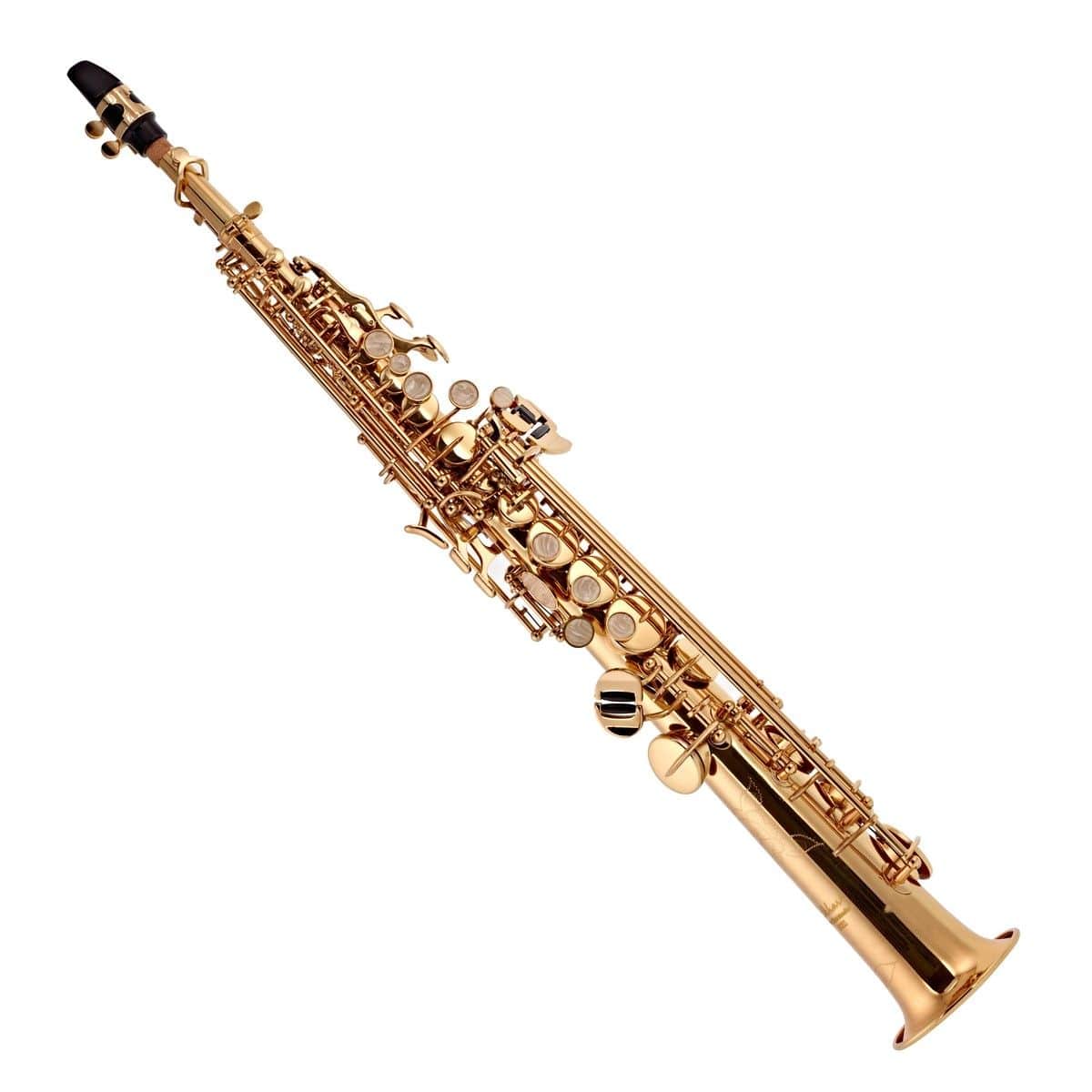
FEATURES: Clear lacquer finish for brilliant projection
OTHER INFO: With a detachable curved neck, which makes it easier to transport and store
- One piece body for improved resonance and intonation
- Comes with two crooks so you can find a shape to suit you
- Uses a soft shell case
When you click ‘Check Price’, you’ll see there are loads of great places to buy this item. Our personal favorite is Sweetwater for the US, and Thomann and Gear4Music for the UK & Europe.
They are the largest music retailers, with excellent customer service, competitive prices, really fast shipping, and the longest guarantees.
The professional musician who wrote this article combined many things,
from the product build, manufacturer’s reputation through to feedback
from other users, to create our famous TedScore™.
Saxophone Quartets and Ensembles
Your smallest saxophone plays a crucial role as the top voice in saxophone quartets. These groups typically use soprano, alto, tenor, and baritone saxes together.
In classical saxophone quartets, you provide the melody line and highest harmonies. Your bright tone balances perfectly with the deeper voices below you.
Chamber music groups often feature the smallest saxophones because they blend well with other instruments. You’ll find them paired with piano, strings, and woodwind ensembles.
Some specialized groups use multiple small saxophones together. These rare e
Smallest Saxophone in the Saxophone Family
The soprillo holds the title as the smallest saxophone ever made, measuring just 13 inches long with its mouthpiece. This tiny instrument sits at the very top of the saxophone family tree, producing sounds an octave higher than its soprano cousin.
How It Fits in the Saxophone Family
The soprillo extends the saxophone family beyond what creator Adolphe Sax originally imagined in 1846. While Sax’s patent included saxophones from the giant subcontrabass to the sopranino, he never envisioned something this small.
German maker Benedikt Eppelsheim brought the soprillo to life in the late 1990s. You’ll find it pitched in B♭, just like many of its larger relatives.
The soprillo sits at the absolute top of the saxophone hierarchy. Here’s where it fits:
- Soprillo (smallest, highest)
- Sopranino
- Soprano
- Alto
- Tenor
- Baritone
- Bass
- Contrabass
- Subcontrabass (largest, lowest)
This placement makes the soprillo the soprano’s little sibling. It produces sounds that reach into registers most saxophones can’t touch.
Comparison to Other Saxophones
When you compare the soprillo to other saxophones, the differences are striking. At 13 inches long, it’s exactly half the length of a soprano saxophone.
The soprillo plays one full octave higher than the soprano. While a soprano might sound bright and piercing, the soprillo enters almost flute-like territory with its incredibly high pitch.
Size Comparison:
| Saxophone Type | Approximate Length | Pitch Relationship |
|---|---|---|
| Soprillo | 13 inches | Highest |
| Soprano | 26 inches | One octave lower than soprillo |
| Alto | 35 inches | Much lower |
Playing the soprillo requires a completely different approach than other saxophones. You’ll need an extremely tight embouchure because of its tiny mouthpiece and reed.
The keywork only extends to written E♭6 instead of the F or F♯ found on most saxophones. Even the octave key had to be moved to the mouthpiece because there simply wasn’t room elsewhere on the instrument.
Alphasax Alto Saxophone

DESIGNED FOR: young beginners who would otherwise struggle with the size of an alto sax.
FEATURES: 33% lighter than a standard alto saxophone
OTHER INFO: with some keys removed, it has a 2-octave range, making it ideal for beginner to Grade 3.
Alphasax Alto Saxophone
- Key work designed to be easier to reach.
- Keys removed make it significantly lighter. Nice sound
- Harness enables young players to support the weight comfortably. Players can start at a younger
- Has a slightly reduced range due to keys being removed for lightness.
When you click ‘Check Price’, you’ll see there are loads of great places to buy this item. Our personal favorite is Sweetwater for the US, and Thomann and Gear4Music for the UK & Europe.
They are the largest music retailers, with excellent customer service, competitive prices, really fast shipping, and the longest guarantees.
The professional musician who wrote this article combined many things,
from the product build, manufacturer’s reputation through to feedback
from other users, to create our famous TedScore™.
Notable Players and Recordings
The soprillo holds the title as the smallest saxophone ever made, measuring just 13 inches long with its mouthpiece. This tiny instrument sits at the very top of the saxophone family tree, producing sounds an octave higher than its soprano cousin.
Famous Smallest Saxophone Performers
Very few musicians have successfully tackled the sopranissimo saxophone. The instrument is incredibly difficult to play and requires months of practice even for professional players.
Most sopranissimo performers come from the ranks of experienced soprano saxophone players. These musicians already have the tight embouchure skills needed for such a small instrument.
The German manufacturer Benedikt Eppelsheim often demonstrates the instrument at trade shows. Professional sax choir directors sometimes purchase the sopranissimo for special performances.
Classical saxophonists are more likely to use the sopranissimo than jazz players. The instrument works well in structured ensemble pieces where its unique sound can shine.
Some contemporary composers have written specific pieces for the sopranissimo. These works showcase the instrument’s extreme high range and piccolo-like qualities.
Recommended Listening
Finding sopranissimo recordings can be challenging since the instrument is so rare. Most examples appear in saxophone ensemble recordings rather than solo performances.
Look for modern classical saxophone quartets that feature extended instrument families. Some groups use the sopranissimo to add extra brightness to their sound.
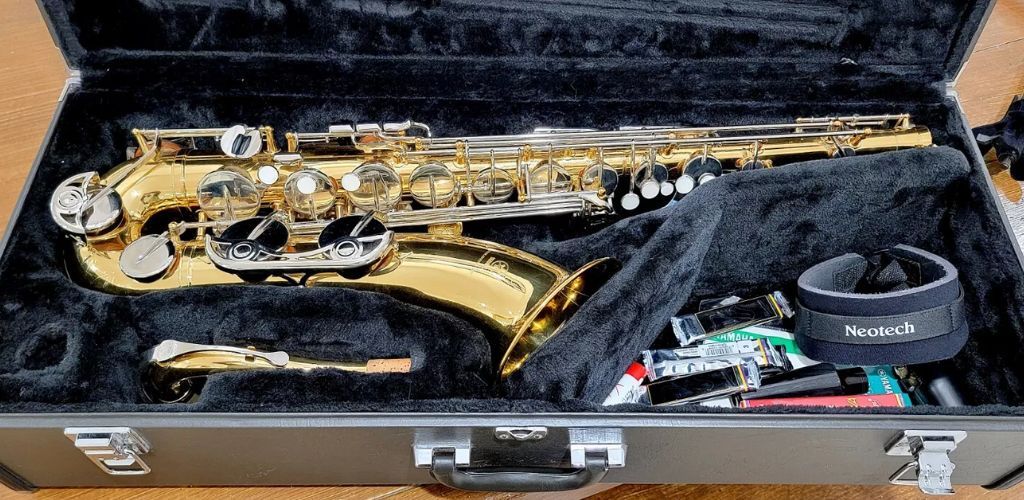
Educational demonstration videos are your best bet for hearing the instrument. Many of these feature the maker or professional players showing off its capabilities.
Saxophone choir recordings sometimes include the sopranissimo in large ensemble pieces. The instrument adds a unique top voice that cuts through the mix.
Online music platforms may have limited examples of sopranissimo performances. Search for “soprillo saxophone” or “sopranissimo” to find available recordings.
Buying Guide and Care Tips
Getting the right soprano saxophone and keeping it in good shape will make your musical journey much more enjoyable. The key is finding a model that matches your skill level and budget, then learning proper care habits.
Choosing the Right Model
Start with a student model if you’re new to saxophone playing. These instruments cost less and handle mistakes better than expensive professional models.
Look for brands like Yamaha, Selmer, or Conn when shopping. These companies make reliable instruments that won’t break your budget.
Key features to check:
- Body material: Yellow brass works great for beginners
- Finish: Clear lacquer protects the instrument and looks nice
- Mouthpiece: Make sure it comes with a decent starter mouthpiece
- Case: A hard case keeps your sax safe during transport
Try playing different models before you buy. Each saxophone feels different in your hands and mouth.
Ask your music teacher for advice on specific brands. They know which instruments work best for students.
Consider renting first if you’re not sure about long-term commitment. Many music stores offer rent-to-own programs.
Maintenance and Storage
Clean your soprano sax after each practice session. Moisture and spit can damage the pads and metal over time.
Use a cleaning swab to remove moisture from inside the body. Pull it through several times until it comes out dry.
Daily care checklist:
- Swab out the body and neck
- Wipe down keys with a soft cloth
- Store in a hard case
- Keep the case closed when not playing
Oil the keys once a month with special saxophone oil. Put just one tiny drop on each moving part.
Never leave your sax on a stand overnight. Cases protect against dust, temperature changes, and accidents.
Take your instrument to a repair shop once a year. A professional can spot problems before they get expensive to fix.
Store your case in a room with steady temperature. Avoid hot cars, cold garages, and damp basements.
Small saxophones bring unique sounds and special challenges that many players want to understand. The soprillo stands as the tiniest member while other compact saxes offer their own distinct features.
FAQ's
The sopranissimo saxophone holds the title of world’s smallest saxophone. You might also hear it called the soprillo.
This tiny instrument measures just 12 inches long without its mouthpiece. With the mouthpiece attached, it reaches only 13 inches total.
The sopranino sits as the second smallest saxophone in the family. It’s larger than the soprillo but smaller than the soprano sax.
You’ll find it falls between these two in both size and pitch range. The sopranino offers a higher sound than most other saxophones you’re used to hearing.
Benedikt Eppelsheim makes the soprillo saxophone exclusively in Germany. You can find them online for around $2,900.
Since only one maker produces them, your options stay pretty limited. The high price reflects how rare and specialized these instruments are.
Small saxophones demand a much tighter mouth position than larger ones. Your facial muscles need to work harder to control the sound properly.
Even professional soprano players often need months of practice to master the highest notes. The soprillo requires even more skill and patience to play well.
The soprillo plays a half octave higher than the sopranino saxophone. It’s also much smaller and harder to manufacture.
While sopranino saxes have been around longer, the soprillo repr
Yes, smaller saxophones produce much higher pitches than their larger cousins. The soprillo reaches notes an entire octave above the soprano sax.
Your range extends from low Bb to high Eb on a soprillo. This gives you access to extremely high notes that other saxophones simply can’t reach.


